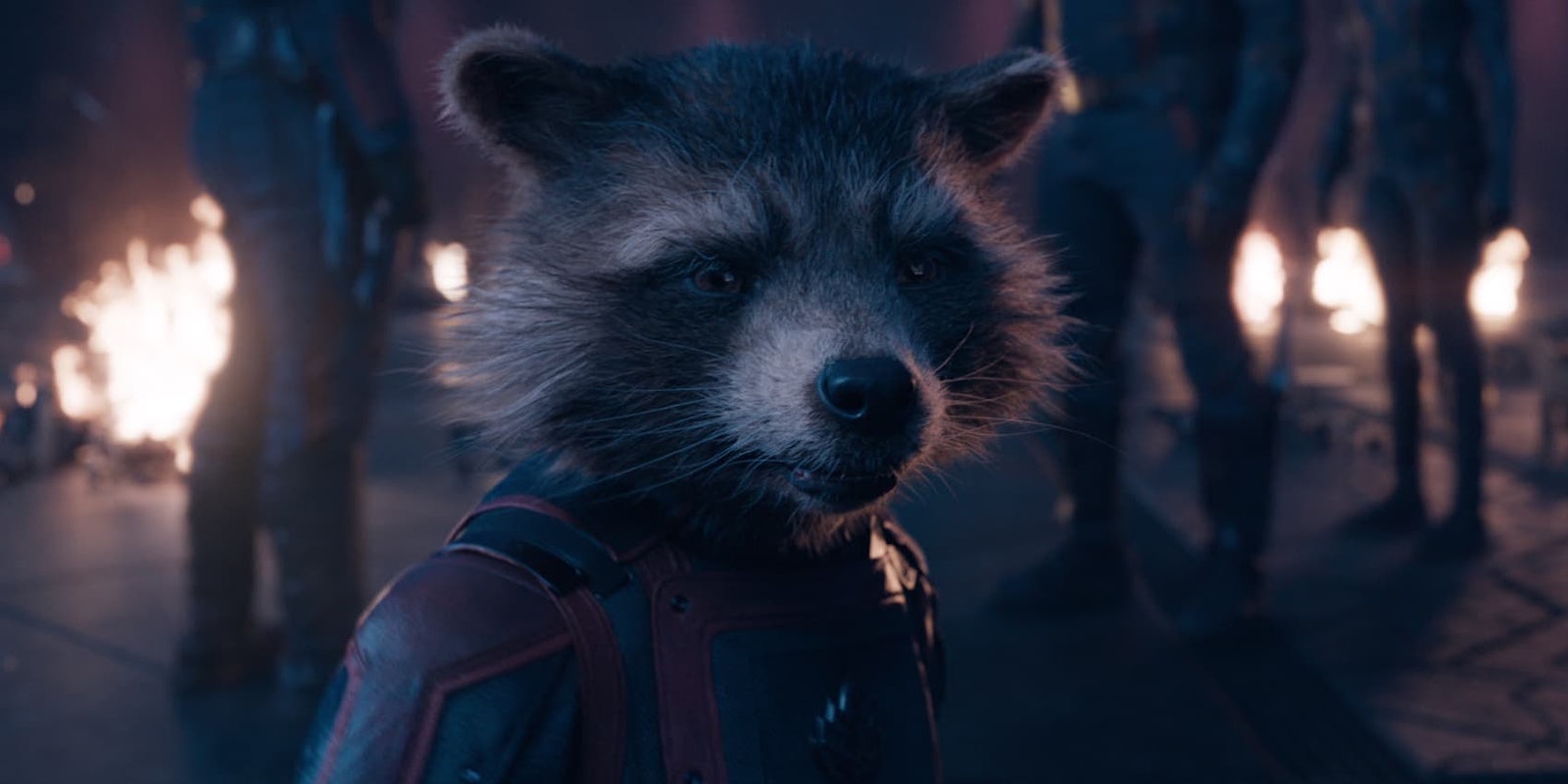The new Guardians of the Galaxy movie has received plenty of press attention for featuring the first F-bomb in the MCU. By Disney standards, this detail is relatively edgy, but it’s not the main reason why Guardians Vol. 3 may be unsuitable for younger viewers.
Despite being a pretty typical MCU release in terms of violence (cartoonish) and sexual content (nonexistent), director James Gunn included some surprisingly disturbing material in the form of animal cruelty. If you’ve seen the movie, you’ll know what I mean. If not, prepare for some general spoilers.
The previous GotG films already hinted at Rocket Raccoon’s tragic past, scarred by surgical experimentation. This movie delves more directly into his backstory, portraying animals suffering through brutal experiments dictated by a sadistic eugenicist known as the High Evolutionary (Chukwudi Iwuji). The young Rocket is cute and childlike, naively buying into the High Evolutionary’s plan to create a genetically engineered master race. Living in a squalid cell, Rocket’s best friends are a walrus with wheels, a rabbit with spidery prosthetic legs and a surgically-attached metal mask, and an otter with robotic arms.
It’s pretty obvious that these creatures are doomed to die, leaving Rocket traumatized for life. But not before we’ve seen the High Evolutionary kill several other sentient animals, including a scene where Rocket is forced to witness a turtle be forcibly transformed into a humanoid reptile who screams in agony before being incinerated as a “failure.”
As I noted in my review, these flashbacks resemble a PETA ad decrying the evils of puppy mills or factory farming, amped up for maximum sentimentality because the animals in question are CG animated to look as pathetic and tormented as possible. They’re suffering in a way we rarely see in MCU fight scenes, where injuries and pain are intentionally downplayed.
Compared to genuine body-horror movies, this stuff hardly qualifies as extreme. It’s perfectly within the bounds of a PG-13 rating, and my main criticism is that the writing is hackneyed and emotionally manipulative. That being said, Guardians Vol. 3 pushes the boundaries of the MCU’s consistently tame branding.
Despite the habitual PG-13 ratings signaling that these movies aren’t meant for young kids, Marvel is a family brand enjoyed by plenty of younger viewers. Parents trust that each movie will follow a similar action-comedy formula, with no serious violence or “adult content.” With Guardians of the Galaxy Vol. 3, they’re in for a nasty surprise. Those Rocket Raccoon scenes don’t fall under the three pillars of “unsuitable for kids” content (sex, violence, and curse words), but they’re definitely going to freak people out.
There’s already a great deal of discourse around the MCU’s cultural dominance as a family franchise. These movies have an intense adult fanbase, but they also have squeaky-clean branding—including the fact that Disney explicitly markets some characters as role models for children. And since superhero movies are widely consumed as family entertainment, they’ve overtaken much of the traditional market for children’s cinema. Twenty years ago, families could reliably find movies like The Parent Trap or Stuart Little in theaters. Now, much of that screen space is taken up by PG-13 action.
At the other end of the scale, film buffs complain that Marvel’s ubiquity is also stifling adult cinema. There’s a concern that the MCU era created a generation of viewers who shy away from mature storytelling—whether that’s a prudish attitude to sex scenes, or a lack of appreciation for slower, more subtle dramas. In that context, Guardians of the Galaxy Vol. 3 is an interesting upset. No one would accuse this of being an adult movie, but it’s not exactly kid-friendly either, making it a deceptively boundary-pushing addition to the franchise.



